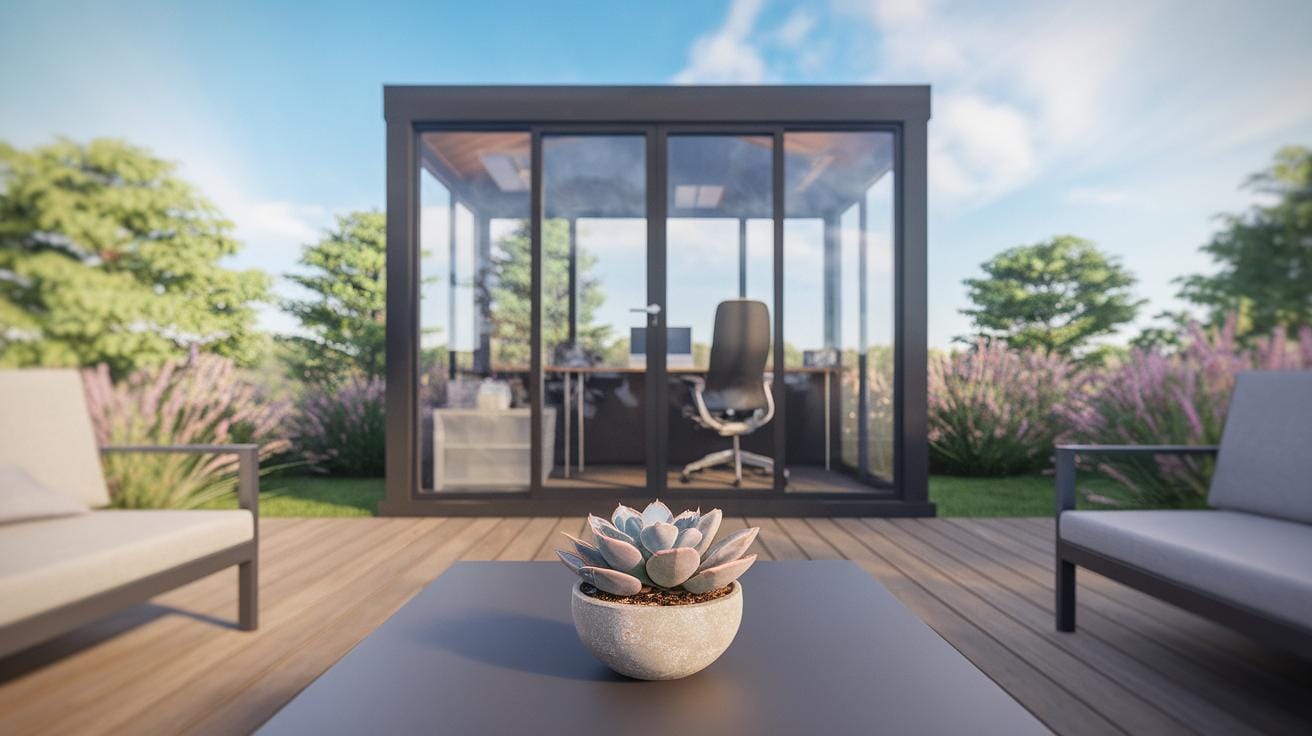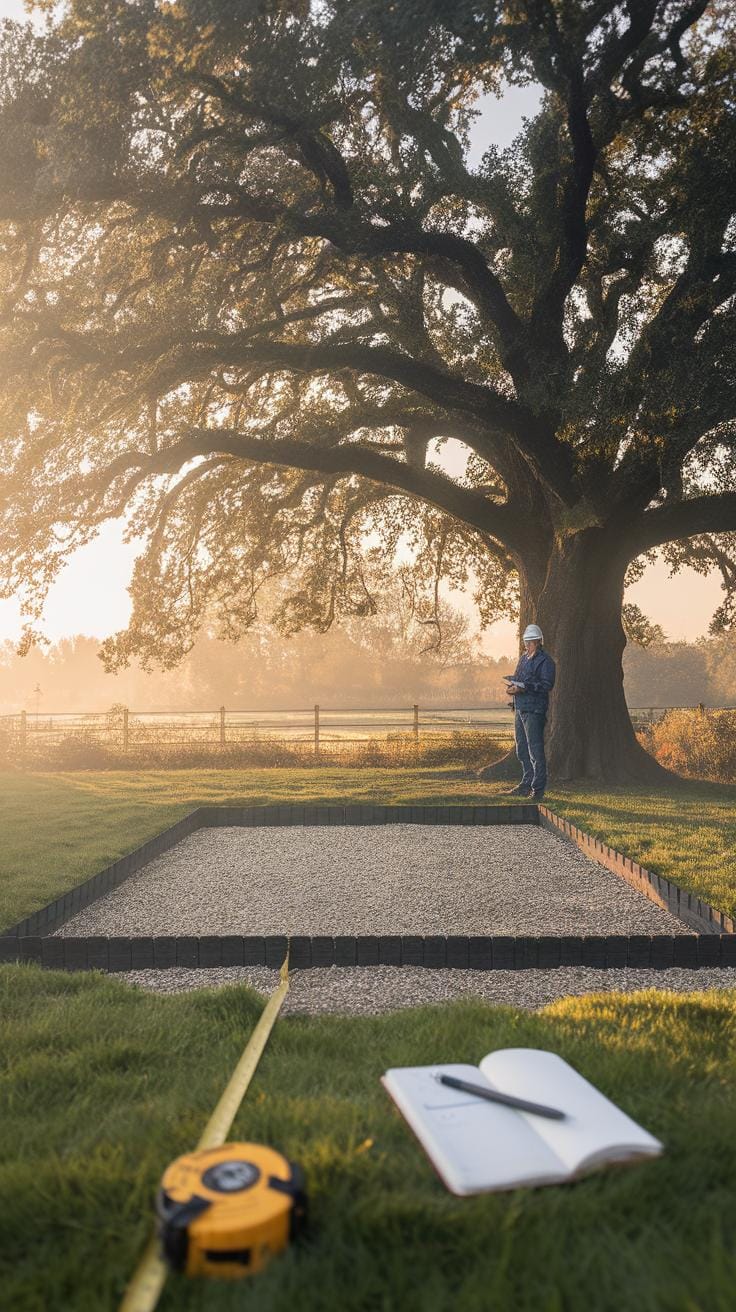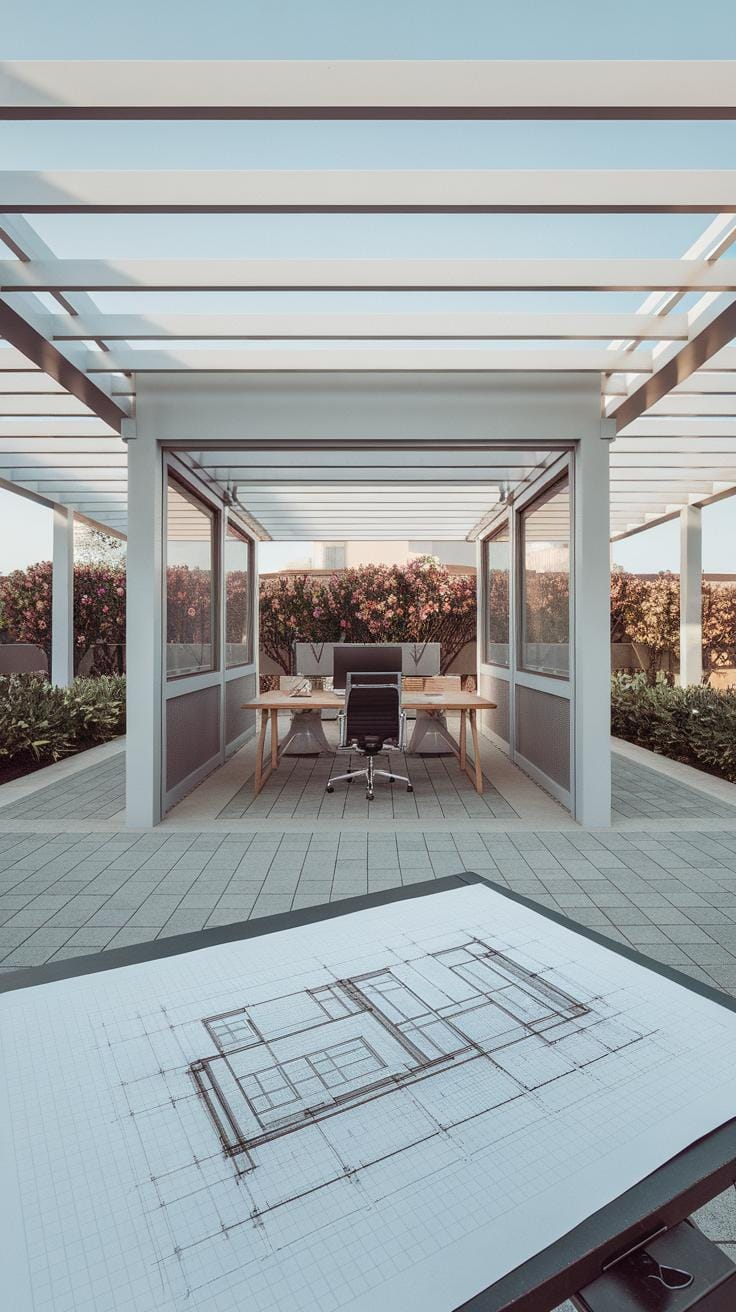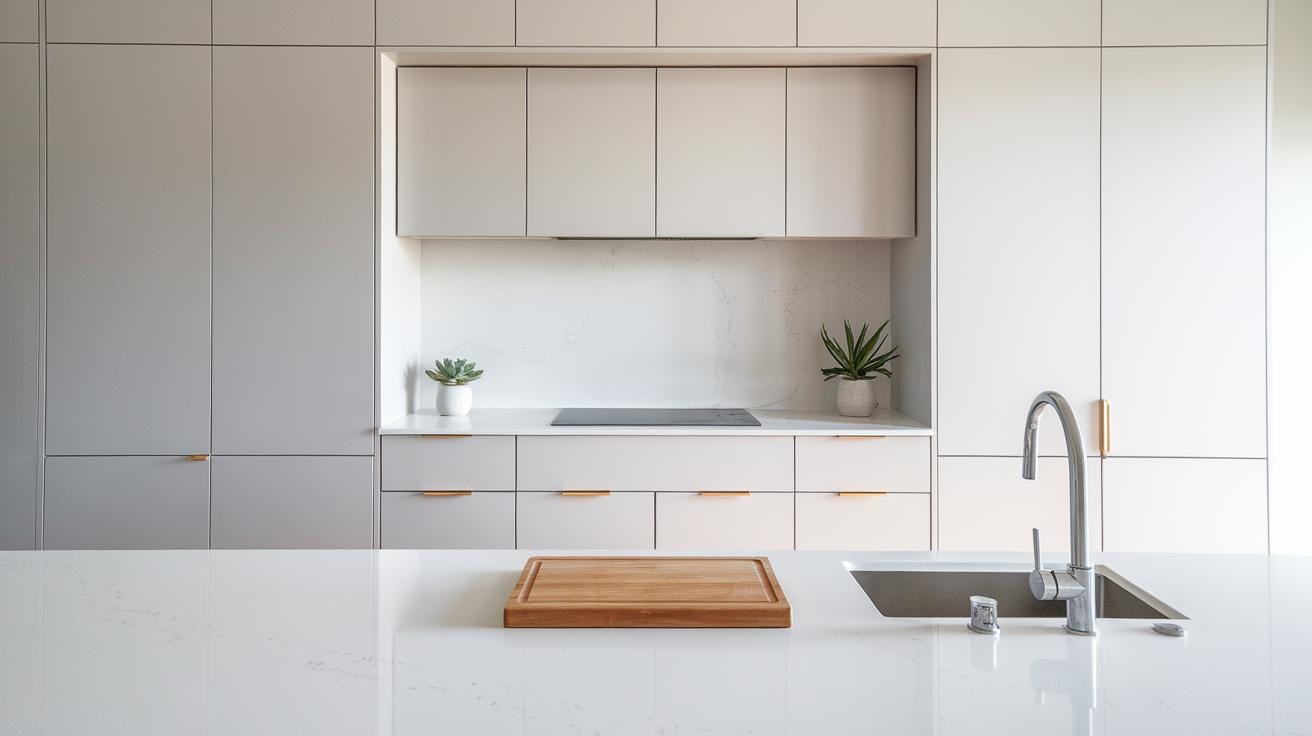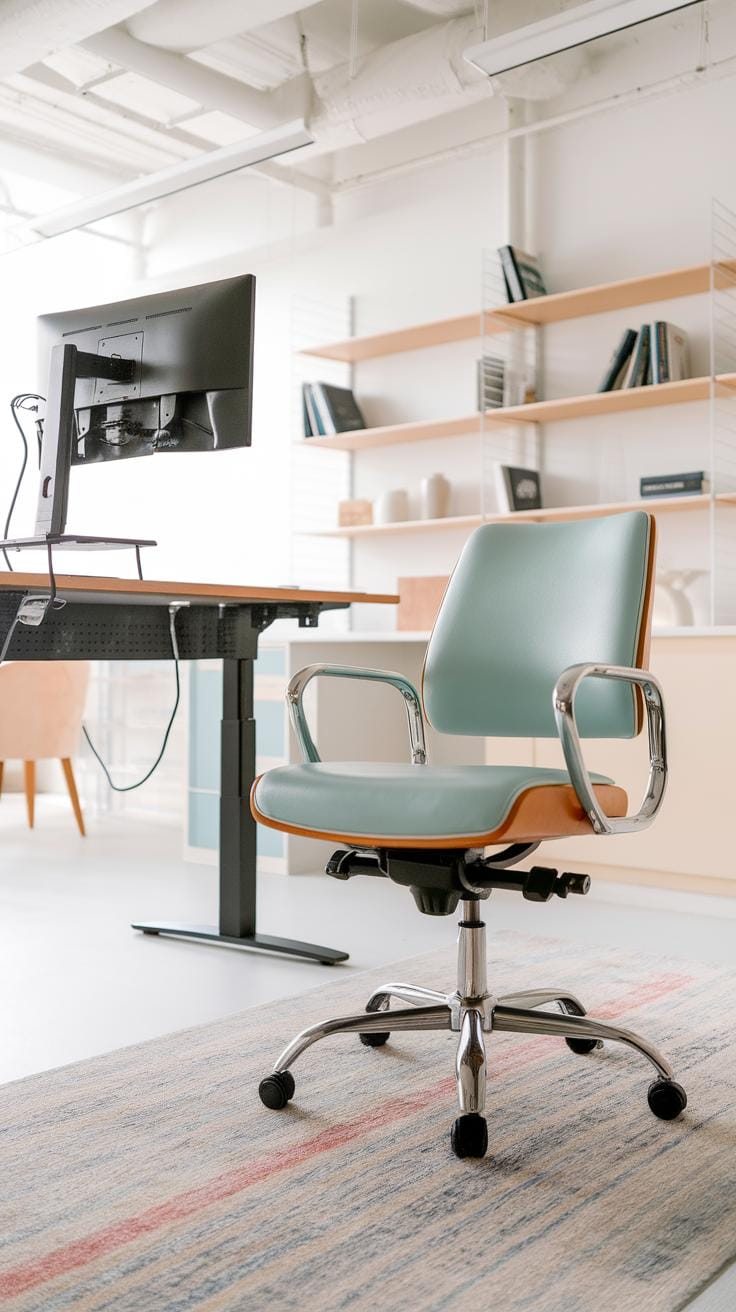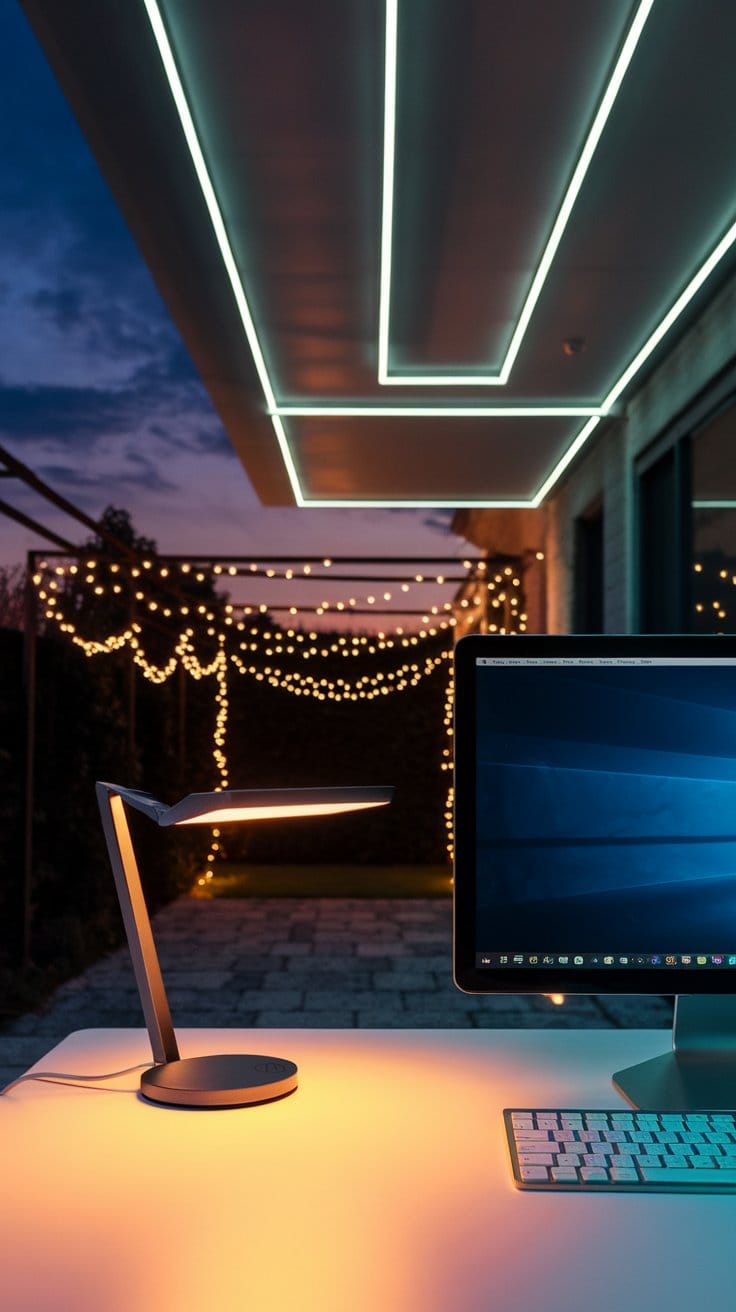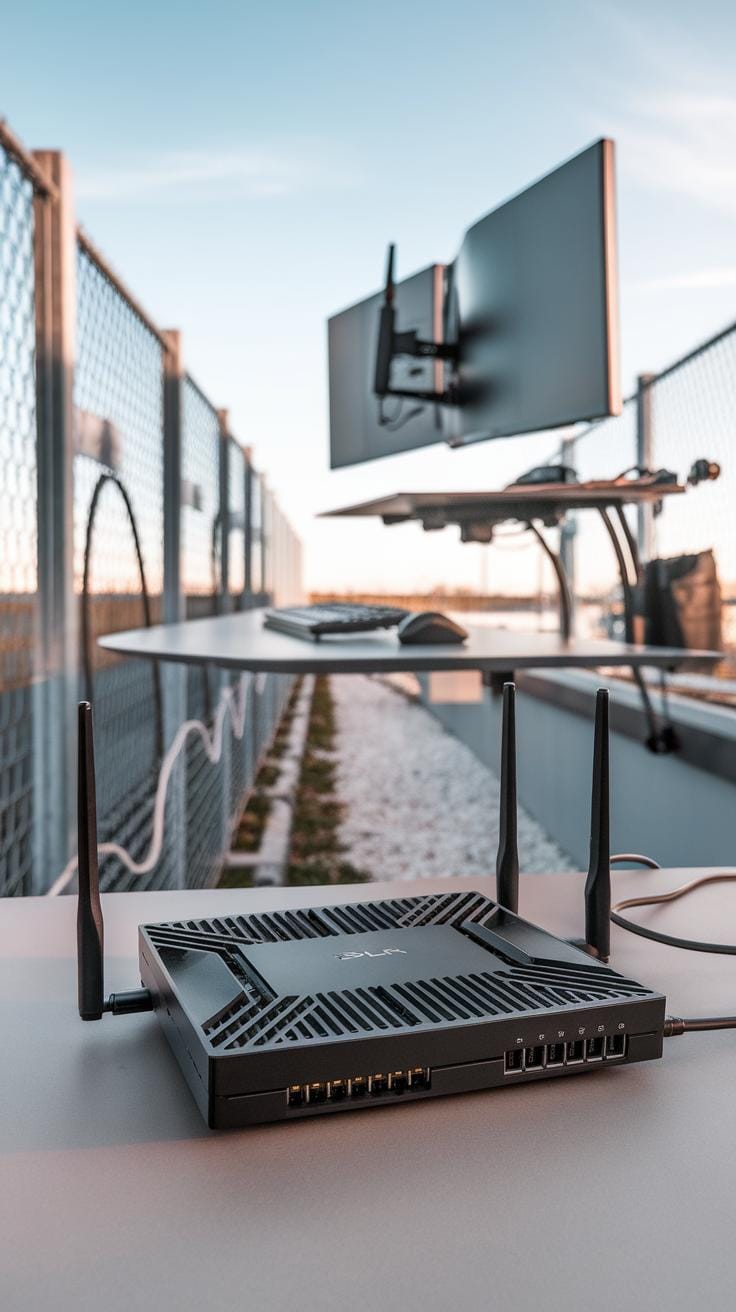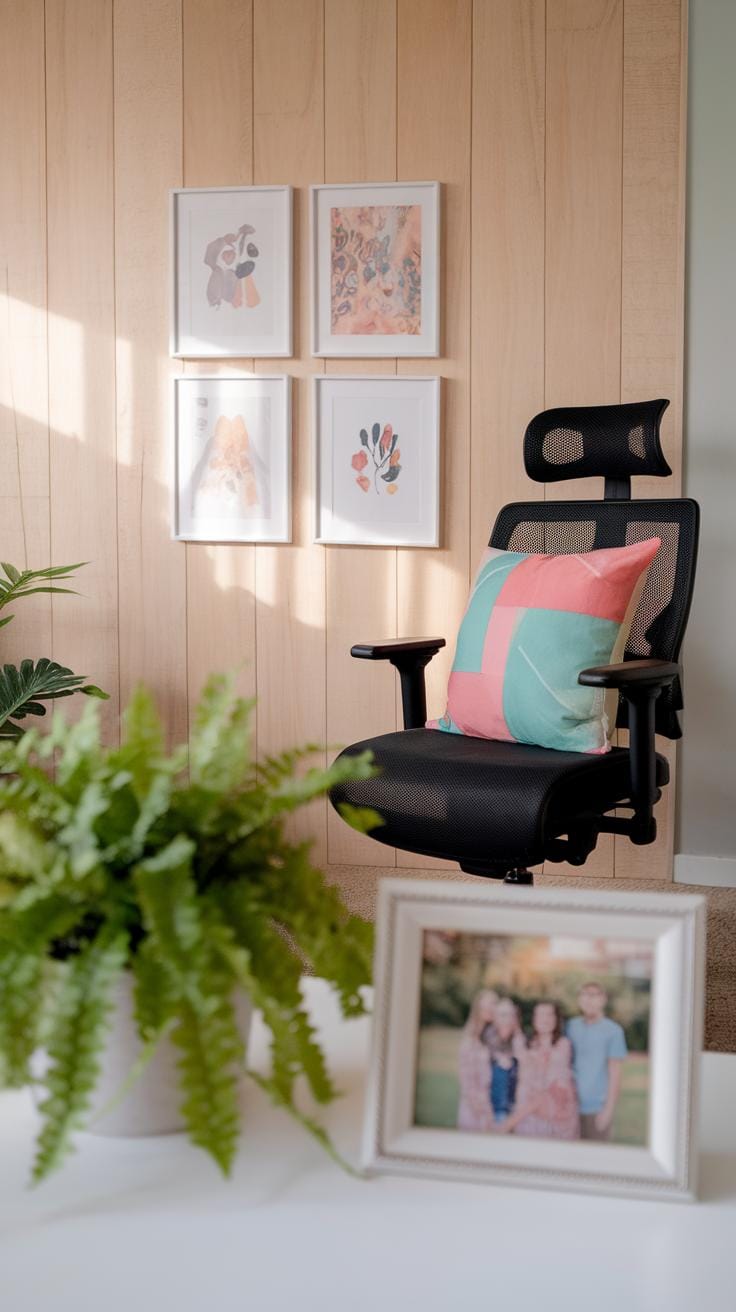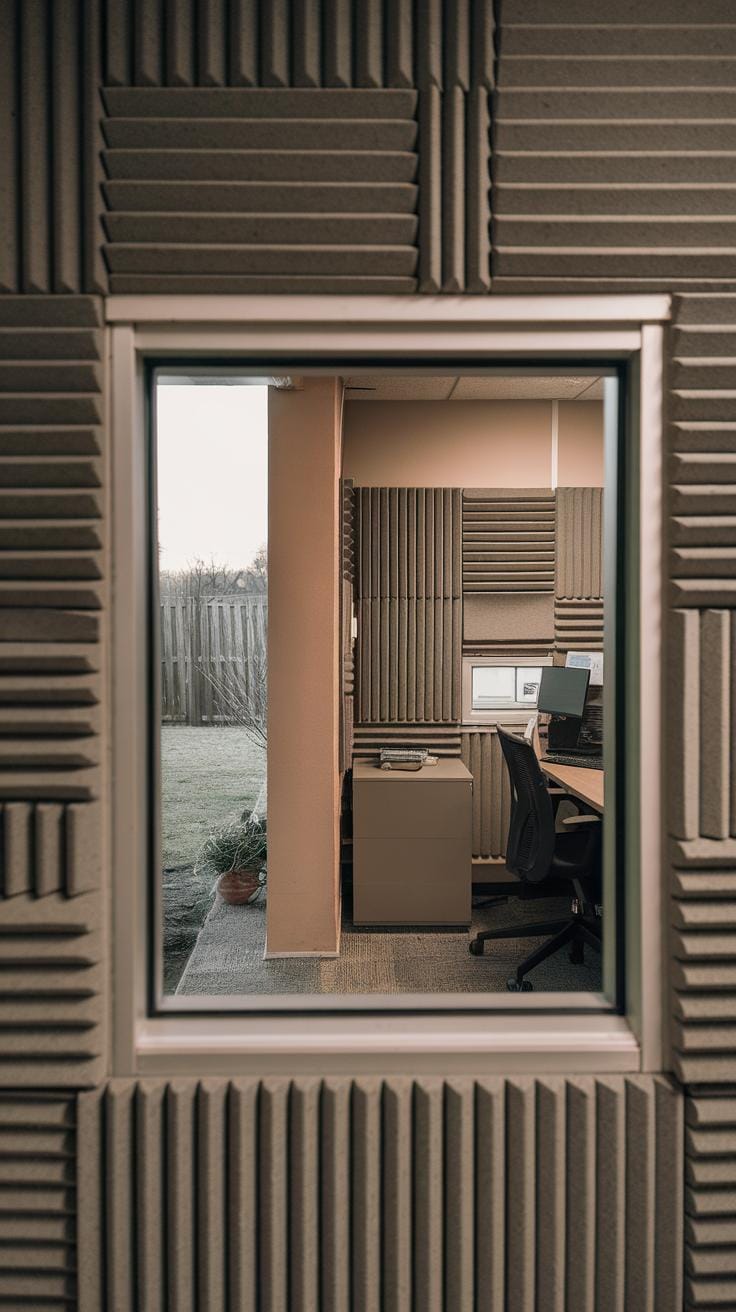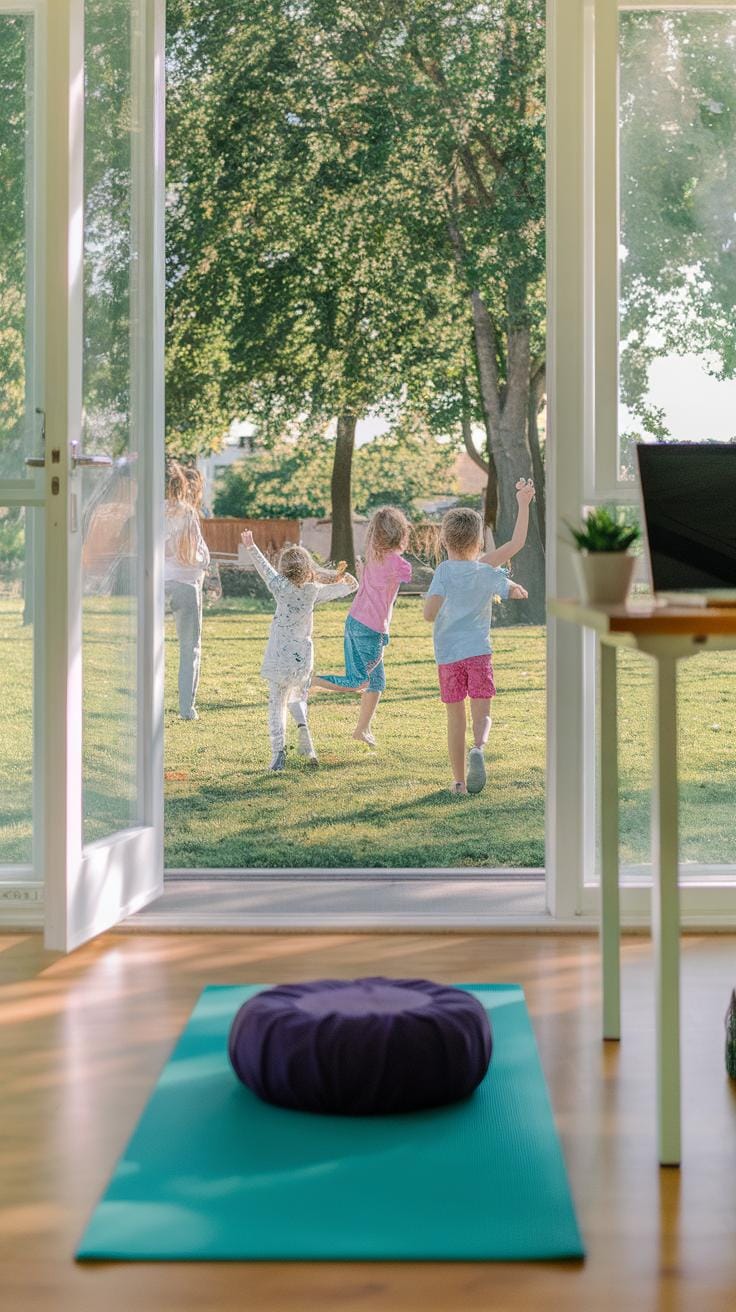Introduction
Remote work has grown in popularity, changing how people approach their work environments. Many professionals seek alternative workspaces that blend productivity with comfort. Your backyard offers an ideal spot to set up a dedicated office. A backyard office provides a quiet, separate space that helps reduce distractions. This setup can boost productivity and improve work-life balance by creating clear boundaries between work and home activities. You have the freedom to customize the space to fit your work needs and personal style.
Designing and building a backyard office requires careful planning and consideration. You need the right layout, equipment, and atmosphere to create a space where you want to spend your workday. Choices about lighting, furniture, and technology play crucial roles. This article will guide you through various setup ideas and practical tips to help you build the perfect backyard office. Whether you want a small shed or a more elaborate workspace, these ideas will help you focus and succeed in your remote work.
Choosing the Right Location for Your Backyard Office
Finding the ideal spot in your backyard for an office shapes how well you work outdoors. Think about where sunlight falls during the day. Does the area get morning sun or afternoon sun? Too much bright sun can cause glare on screens, while too little light might make the space feel gloomy. Noise is another key factor. Placing your office near a busy street or noisy neighbors can interrupt your focus. You need to find a quieter corner where household activity won’t distract you.
Privacy matters for comfort and concentration. Look for a spot where you can add fences or plant shrubs to block views. Access to power outlets and a good internet signal is invisible but vital. Evaluate whether extending cables or boosting Wi-Fi will work in your chosen area. Balance comfort with practical needs to pick a location that supports your daily work without hurdles.
Assessing Sunlight and Weather Conditions
Spend a few days watching how the sun moves over your backyard. Does a particular area soak up sun in the morning but cool down by afternoon? A spot with steady, indirect light often works best. Too much direct sunlight can heat up your office and strain your eyes, especially on screens. Position your office where you can enjoy natural light while avoiding harsh midday sun.
Shading tools like awnings or umbrellas help reduce heat and glare. Plenty of air circulation is key to staying comfortable, so choose a spot that catches a breeze or consider adding vents or fans. Observing seasonal weather patterns helps too. Is your backyard exposed to strong winds or heavy rain? Protecting your office from those elements keeps the space usable year-round.
Ensuring Privacy and Minimizing Distractions
Privacy boosts your focus and reduces stress. If your chosen spot feels exposed, use fences, tall plants, or privacy screens to create boundaries. A living wall of shrubs or bamboo can block visual distractions and absorb noise. Avoid placing your office near frequently used outdoor spaces like patios or play areas to limit interruptions.
Think about sound sources in your neighborhood. Traffic noise or barking dogs can break your concentration. Testing noise levels at different times helps find a spot that stays quiet throughout your workday. Creating a peaceful environment allows you to dive deep into projects and stay productive without constant background noise pulling you away.
Designing Your Backyard Office Space
Your backyard office should serve your work needs without adding complexity. Focus on keeping the design simple and practical. Start by choosing a layout that fits your daily tasks. Do you need more room for meetings or just space for a laptop and notes? Your answer will guide size and shape decisions.
The structure’s size should avoid crowding your yard but offer enough room to move comfortably. A rectangular or square shape works best for easy furniture placement and efficient use of space. Integrate features like windows for natural light and shelves for storage to support your workflow. Keep pathways clear to move freely.
Functionality means your space matches your work style. Think about electrical outlets for devices and spots to charge your phone. Add easy-to-reach storage to prevent clutter. How will you organize paperwork or tools? What setup helps keep distractions low? Design your office to fit your specific tasks, not to impress others.
Choosing Between a Shed, Tiny House, or Canopy
Sheds offer an affordable, quick setup. They provide solid walls and protection from weather but may need upgrades for insulation and comfort. If you want a work-only area with minimal fuss, a shed fits well.
Tiny houses cost more but add full comfort. They often include heating, cooling, and plumbing. This makes them ideal if you spend long hours working outside and want a space feeling like a real office.
Canopies provide the most open feel but lack protection from wind and insects. They work best if you live in mild weather and want a flexible space. Cost is low, but you sacrifice privacy and some comfort.
Which option helps you balance cost, comfort, and durability for your needs? Think about how often you’ll use it and the extras you want.
Planning the Interior Layout for Efficiency
Your interior layout should make work easy and keep essentials within reach. Position the desk near natural light but avoid glare on screens. Place storage like drawers or shelves close enough to access quickly but out of the way of your workspace.
Use vertical space for organizing files or supplies. A wall-mounted system saves floor area and keeps things tidy. Keep the desk clear except for your computer and daily tools to maintain focus.
If space allows, add a small chair or cushion for breaks. Changing spots during the day helps refresh your mind. Ask yourself, does your layout let you switch from work to rest smoothly? Avoid clutter and keep paths open to move around easily.
Furnishing Your Backyard Office for Comfort and Productivity
Selecting the right furniture shapes how well you work in your backyard office. Focus on finding pieces that marry comfort with function to keep you productive. Ergonomic seating and desks support your posture and ease strain, making long work hours manageable. Adjustable chairs let you fine-tune height and back support, so your body stays comfortable and aligned. Desks that allow you to change positions, such as sit-stand models, can boost circulation and reduce fatigue.
Storage matters too. Shelves, drawers, and filing cabinets keep essential items organized and within reach. A tidy workspace helps you focus and avoid distractions. Imagine walking into your office and finding everything you need right where it belongs. This discipline limits clutter and makes your workday smoother. Have you considered what items you use most and how best to store them for quick access?
Ergonomic Chairs and Desks
Good posture reduces back and neck pain, which many remote workers face. Ergonomic chairs support your lower back with adjustable lumbar settings. Look for chairs that allow you to adjust seat height, backrest angle, and armrests. Your feet should rest flat on the ground, and your knees should be at a 90-degree angle. Desks that permit changing from sitting to standing encourage movement and reduce stiffness.
Choose desks with enough surface area for your computer, keyboard, and notes without feeling cramped. A comfortable setup helps prevent repetitive strain injuries. Test your furniture before purchase if you can. How does each chair or desk feel after sitting for 30 minutes? This quick test can prevent discomfort later.
Storage and Organization Ideas
Organized storage solutions maintain a clean workspace. Use wall-mounted shelves to save floor space and keep items visible. Drawers help separate small office supplies like pens, cables, and sticky notes. For papers, a filing cabinet or portable file boxes keep documents orderly and accessible. Labeling drawers and files speeds up finding what you need instantly.
Think about vertical storage options that fit your backyard office’s size. Overhead shelves or pegboards can hold tools or decorations without crowding your desk. A clutter-free workspace reduces mental distractions and supports focus. What storage option fits your work habits best? Experiment with different systems until your office feels balanced.
Lighting Your Backyard Office for Optimal Work Conditions
Proper lighting plays a key role in keeping you productive and comfortable while working outdoors. Natural light helps regulate your sleep cycle and boosts alertness during the day. If your backyard office has large windows or glass doors, position your desk to take full advantage of sunlight without experiencing screen glare. Placing your screen perpendicular to windows often reduces reflections and eye strain.
Weather changes throughout the day can affect how much natural light you receive. Cloudy or shorter days need supplementary artificial light so you can maintain focus without hurting your eyes. Good lighting also helps reduce headaches and fatigue, making your work hours more effective. Have you noticed how lighting changes your mood or energy during work?
Using Natural Light Effectively
Bring in daylight by installing windows or glass doors in your backyard office. These openings invite sunlight that brightens your workspace and lifts your mood. Natural light keeps your body’s internal clock steady and improves concentration.
Arrange your desk near the window but avoid putting your screen directly in front of or behind the light source. This setup prevents glare, which causes discomfort and reduces screen visibility. Use blinds or sheer curtains to soften strong rays without blocking daylight completely.
Selecting Artificial Lighting Options
Choose lighting that you can adjust for brightness and color temperature. LED desk lamps with dimming features let you control the light level as needed, matching different times of the day or tasks. Cooler light tones help during active work while warmer tones can make late afternoons feel less harsh.
Ceiling lights can provide general illumination, but task lighting is vital for detailed work. Pick lamps with flexible arms so you can direct light exactly where you need it. Can you imagine how much easier it is to focus when your eyes don’t have to strain against poor lighting?
Technology and Connectivity in Your Backyard Office
Your backyard office relies heavily on technology to keep your work running smoothly. Secure and steady internet access is a must for video calls, file sharing, and real-time collaboration. Evaluate your current home Wi-Fi to see if it reaches your outdoor workspace without drops or lag. Consider the devices you’ll need, such as a reliable computer, a printer for quick documents, and a phone for calls. Think about where these devices will sit and how you’ll keep them charged during long workdays.
Organizing your workspace to support these tools is key. Planning for power outlets and keeping cables tidy prevents accidents and clutter. Think about the weather-proofing of your tech gear since outdoors means exposure to moisture and dust. Does your workspace have enough protection from the elements? Planning this in advance can save frustration and keep your devices running longer.
Ensuring Strong and Stable Internet Connection
Your backyard office performs best with a solid internet connection. If your Wi-Fi signal fades outside, try a Wi-Fi extender to boost the signal range. These devices pick up your router’s signal and retransmit it to reach further areas. Powerline adapters offer another option by sending internet through your home’s electrical wiring, which can deliver fast and steady service outdoors.
Why does this matter? Slow or unreliable internet disrupts meetings and wastes your time. Imagine mid-call freezing or files failing to upload. Those interruptions slow your productivity. Test your connection speed where you’ll work before setting up. Ask yourself, can my network handle video conferencing and cloud software easily? Improving your connection will make your workflow smoother and reduce frustration.
Power Solutions and Cable Management
Plan enough power outlets for all your devices in your backyard office. Installing outdoor-rated sockets helps you plug in computers, printers, and lamps safely. Use surge protectors to shield equipment from power spikes that can cause damage or data loss. Think about backup power sources like a small uninterruptible power supply (UPS) to keep you online during brief outages.
Organizing cables prevents tripping hazards and keeps your workspace neat. Use cable ties, clips, or covers designed for outdoor use to bundle cords together. Running cables through weatherproof conduits provides extra protection from moisture and sun damage. How easy will it be to unplug and move devices if needed? Good cable management makes your office safer and more flexible. Keeping power accessible and protected ensures your remote workdays stay productive without unexpected tech problems.
Personalizing Your Backyard Office Environment
Creating a backyard office that feels inviting can boost your work motivation. Adding personal touches transforms the space from just a workspace to a place you want to spend time in.
Consider incorporating décor that reflects your taste but stays simple. Choose items that bring positive energy without cluttering your desk or shelves. A favorite photo, an inspiring quote, or handmade crafts often add meaning.
You can also select color schemes that suit your mood. Warm colors like soft yellows or oranges encourage creativity, while cool blues and greens help with focus. Think about what color makes you feel productive and calm during your workday.
Ask yourself: What environment helps me stay energized and calm? Use that answer to guide your décor and layout choices.
Decor and Color That Inspire
Colors affect how you think and feel. Bright shades like yellow and orange can spark ideas, while muted colors such as gray or beige keep distractions low.
Try painting one wall or adding colorful accessories like cushions, desk mats, or artwork. These small changes can change the overall atmosphere without overwhelming the space.
Decor items that remind you of your goals or passions also help. Perhaps a calendar with your professional milestones or a small shelf for your favorite books.
Keeping your desk clear of unnecessary objects helps maintain focus. Select versatile decorations that inspire without taking up much space.
Adding Greenery and Natural Elements
Plants improve air quality by filtering toxins and adding oxygen. This benefits concentration during long work hours.
Natural elements also lower stress levels. Studies show the presence of plants around your workspace can calm the mind and improve mood.
Select low-maintenance plants suited for outdoor or indoor use, like snake plants, pothos, or succulents. They require little watering and survive well in sunlight.
Placing a few pots near your desk or hanging planters on walls brings life to your office without crowding it. Ask yourself where natural light hits most for best plant placement.
Maintaining Comfort Throughout the Seasons
Keeping your backyard office comfortable all year requires smart heating, cooling, insulation, and weatherproofing. Start by sealing gaps and cracks around windows and doors to block drafts. Adding weather-resistant materials on the exterior protects your office from rain, snow, and wind. Think about using insulated panels or foam boards on walls and ceilings to trap heat during winter and keep the space cooler in summer.
Heating and cooling systems are vital for a steady indoor climate. Consider portable heaters or electric fireplaces for chilly days. On hotter days, rely on ventilation and shading techniques, which reduce heat buildup. You want a consistent temperature that helps your concentration and keeps distractions from discomfort away. How can you balance these elements while using eco-friendly options?
Choosing durable furniture and flooring materials that withstand moisture and temperature changes also supports long-term comfort. Adding rugs or carpets inside can soften cold floors in winter. Simple maintenance like clearing gutters and using covers during storms further safeguards your space. How will you plan your setup to enjoy year-round productivity in your backyard office?
Cooling and Ventilation Solutions
Design your office with windows placed opposite each other to create a natural cross breeze. This helps move fresh air through the room without extra energy. Installing adjustable blinds or shades allows you to block intense sunlight during hot afternoons, reducing indoor heat.
Fans offer cost-effective cooling. Ceiling fans or portable fans keep air moving and prevent stuffiness. If you need stronger cooling, a compact air conditioning unit can fit into a window or wall panel. Look for energy-efficient models to save on electricity.
Try planting trees or installing awnings outside to provide natural shade. These help cool the office before the air reaches the windows. Have you measured how airflow changes with different window placements or shading options? Testing these setups can improve comfort with simple adjustments.
Heating and Insulation Techniques
Begin by insulating walls, floors, and the roof with materials like foam board, fiberglass, or spray foam. Proper insulation slows heat loss and reduces drafts. Apply weather stripping around doors and windows to improve seals and keep warm air inside.
For heating, electric space heaters offer flexibility. Choose ones with thermostats and timers for energy control. Infrared heaters warm objects and people directly, often making the space feel warmer faster. You may also consider portable radiant panels mounted on walls for efficient heat distribution.
A stable temperature supports your focus and prevents cold distractions. Creating a heating zone that targets where you work helps save energy. Do you have a plan to test insulation effectiveness or adjust heater settings based on daily temperatures? These steps help sustain a consistent environment during colder months.
Managing Noise and Distractions in Your Backyard Office
Noise and interruptions can easily disrupt your focus when working outdoors. To keep distractions low, start by identifying the main sources of sound around your backyard office. Common culprits include neighbors, family members, lawn equipment, and street noise.
Using soundproofing materials reduces noise from outside. Think about sealing gaps around windows and doors with weatherstripping to block sound leaks. Adding thick wall panels or acoustic foam inside your office can absorb echoes and outside noise. Choose dense curtains or blinds for windows to help muffle sounds.
Creating clear rules about your work time helps prevent unexpected interruptions. Communicate your schedule to people at home and nearby. Use visible signs or door hangers to show when you’re focused on work.
Could setting specific “quiet hours” in your backyard office improve your productivity? Trying a combination of physical sound barriers and clear boundaries gives you better control over your environment.
Soundproofing Basics
Start with sealing gaps where noise sneaks in. Door sweeps and foam strips around doors and windows can make a big difference. Walls can benefit from adding panels made of sound-absorbing materials like cork or fabric-covered foam. These stop sound from bouncing around inside your office.
Windows often let in a lot of noise. Thick curtains or cellular shades help block sound waves. You can also add storm windows to add an extra glass layer that muffles outdoor noise.
For floors, consider rugs or carpet tiles that absorb sound and stop it from echoing. If your backyard office has a shed-like structure, lining the interior walls with plywood covered by insulation can help reduce noise from outside.
What kind of materials do you already have that might help reduce noise? Using simple upgrades like sealing or adding fabric can create a quieter space without heavy remodeling.
Setting Boundaries for Work Hours
Communicating your work hours clearly to family and neighbors reduces interruptions. Tell them when you will be working and when you expect quiet. This clarity helps people respect your time.
Consider placing a clear sign on your office door or nearby fence. Use simple messages like “Working – Please Do Not Disturb.” This visual cue lets others know when you need focus.
Schedule regular breaks to reconnect with family or check in with neighbors. This balance helps maintain relationships without sacrificing your work time. What signals could you put in place to show when work starts and ends?
Keep your boundaries consistent to create a routine that others recognize. Over time, this structure benefits your productivity and reduces stress caused by unexpected distractions.
Balancing Work and Life in Your Backyard Office Setup
Creating clear boundaries between your work and personal time can transform your backyard office into a space that supports both productivity and relaxation. Set specific work hours and stick to them daily to help your mind switch between work mode and leisure. Use alarms or reminders to signal when it’s time to take breaks or end your day.
During breaks, plan simple activities to refresh yourself. Try stretching, sipping a beverage, or stepping away from your desk for a few minutes. These actions help prevent burnout and keep focus sharp when you return to work.
Organize your workspace to fit your needs by keeping work tools within reach and personal items tucked away. A tidy environment encourages clear thinking and signals when it’s time to stop working.
Mental health matters in remote work setups. Take moments to breathe deeply and reset your thoughts if stress builds. Ask yourself: How can I create more separation between these work moments and my home life? Finding answers here will improve your overall remote work experience.
Creating Clear Work Hours and Breaks
Set defined work hours just like you would in an office setting. Starting and ending your workday at consistent times helps you maintain balance. Make a daily schedule that includes short breaks every hour or two.
When breaks arrive, avoid staying at your desk. Stand up, walk around your backyard, or enjoy a snack outdoors. These small routines reboot your energy and make your work hours more effective.
Try timing tasks and rewards. For example, focus fully for 45 minutes, then take a 10-minute break. During breaks, try activities like reading, light exercises, or listening to music. These habits create a clear rhythm between work and rest.
Using the Outdoor Setting to Recharge
Your backyard offers natural ways to relax after work. Step outside for short walks along garden paths or around your yard to clear your mind. Moving your body in the fresh air can reduce stress and boost mood quickly.
Create dedicated outdoor seating areas near your office space. Use comfortable chairs or benches where you can pause to enjoy sunlight or listen to birds. These outdoor spots invite you to disengage from screens and breathe deeply.
Gardening is another option to unwind. Spending time with plants offers a gentle, focused activity that reconnects you with nature. Ask yourself: How can I add small outdoor rituals to help my mind fully relax after a day’s work?
Conclusions
A well-designed backyard office can transform your remote work experience. It provides a dedicated, comfortable environment tailored to your needs. Make sure to consider isolation from distractions, ergonomic furniture, and good lighting. Personal touches can make the space inviting and encourage productivity. Investing time in planning will pay off with an efficient and enjoyable work setup. Experiment with layout, décor, and technology until you find the perfect fit. Your backyard office will become a place where work feels easier and more satisfying.
Remote work offers flexibility and freedom, especially with a backyard office. Boundaries between work and home life become clearer, which helps maintain balance. With thoughtful design, your outdoor office can enhance focus and creativity. Use the ideas presented to guide your project. Step by step, create a workspace that supports your remote work goals. This approach turns your backyard into a valuable asset for work and personal well-being.

